每日观察:关注Flurry手机应用访问高峰期调查(9.30)
1)移动分析公司Flurry最新报告指出,手机应用在晚上7点的使用率最高,这一时段已成为人们访问应用的黄金时间(游戏邦注:Flurry调查追踪了11万款Android、iOS、Windows Phone、黑莓、J2ME手机应用,覆盖了15岁以上的1500多万用户,以下互联网、电视节目黄金时段数据来自《纽约时报》调查副总裁Michael Zimbalist)。
从总体上看,人们一般会在下午3点至晚上10点访问应用,在晚上7点达到峰期。Flurry指出电视节目的黄金时段是晚上7点至11点,而互联网的黄金时段则是下午3点至晚上11点,广播节目的黄金时刻则是用户的开车时间。广告主应有效利用这一时段,最大化应用广告的投放效果。
与电视节目和互联网相比较,手机应用在早上6点至晚上6点的使用率更高,但在晚上9点时开始急剧下滑。早上7点至10点,手机应用访问率比移动互联网更高。早上10点时,约30%的手机用户在访问应用。除此之外,在早上7点至晚上11点访问应用的用户数量堪比美国偶像终场的电视观众。
2)尼尔森第三季度英国智能手机调查报告表明,61%的iPhone用户每月在手机上的支出超过30英磅,而Android用户的同一比例仅为24%。
尽管Android智能手机销量在英国占44%的市场份额,超过RIM黑莓的25%,iPhone的18%,以及Symbian的7%,但iPhone用户对自己手机的满意度最高,其比例高达86%,远超过一般智能手机用户的平均满意度(72%)。
42%的iPhone用户每月都会付费下载应用,但采取同样行动的Android用户仅占15%。
90%的iPhone用户将苹果称为自己最喜爱的手机品牌,只有65%的黑莓用户认为RIM是自己最爱的品牌,甚至还有11%的RIM用户认为苹果才是自己的最爱。
3)木瓜移动最新调查表明,其手机游戏平台的鲸鱼玩家(高消费用户)多为女性,其比例高达69%。
据该公司所称,木瓜移动那些将在一款游戏中消费超过100美元的用户定义为鲸鱼玩家,这些玩家在所有用户中所占比例仅为4%,中级付费玩家(在一款游戏中消费额为10至100美元)所占比例为17%,而那些小鱼用户(消费低于10美元)的比例却高达79%。
但该公司有60%的收益来自鲸鱼玩家,32%收益来自中级付费玩家,小鱼玩家仅创造了8%的收益。
96.65%的鲸鱼玩家主要花钱购买易消耗的虚拟商品,中级付费玩家的同一比例为80.93%,剩下的则购买“持久性”虚拟商品(例如虚拟角色)。86.9%的鲸鱼玩家花钱购买易消耗品主要是为了加速游戏进程。
木瓜移动的鲸鱼用户一般是在玩该平台游戏的第二和第三个月才浮出水面,而小鱼用户在下载游戏后头四天的开销却比鲸鱼玩家更大,但这个时期过后他们就不会继续花钱。
4)加拿大独立开发商Streaming Colour Studios最近对252名iPhone和iPad游戏开发者营收进行调查,结果发现20%的iOS开发者创造了App Store将近97%的游戏收益。
调查还发现,iOS平台最顶尖的1%开发者创造了App Store三分之一的游戏收益,而低层的80%开发者仅赚得3%的游戏收益。
25%的iOS受访者目前所得游戏收益超过3万美元,而处于低端的25%开发者创收甚至不足200美元,还有25%的受访者的收益介于1000至1万美元之间。
其他调查结果包括:
1%受访者宣称仅获得36%的收益;
19%受访者仅回收61%的收益;
80%受访者仅回收4%的收益。
超过90%受访者是全职开发者,33.3%属于兼职人员,还有20.2%属于业余游戏开发者。
该调查还指出,与单兵作战的开发者相比,拥有多名成员的开发团队更易通过游戏项目获得更多收益。
5)澳大利亚开发商Halfbrick工作室首席执行官Shainiel Deo日前在北京表示,他们希望本土化、广告赞助版《水果忍者》未来6个月在中国下载量达到7000万次。
据其所称,该游戏目前在中国下载量已达2000万次,约占其全球6600万下载量的30%。他称从每天下载速率来看,该游戏在中国实现7000万次下载量应该不算难事。
该游戏在中国的盗版率达到50%,为了缓解这一现象,Halfbrick与中国的iDreamSky合作开发了免费的本土化版本,通过广告赞助和微交易模式创收。
Deo还透露,他们将追随Rovio的步伐,推出具有中国元素的《水果忍者》周边产品以及动画短片。
《水果忍者》自2010年投放iOS平台以来,已推出Android、Windows Phone 7和Xbox 360的体感技术版本。
6)移动后端基础设施供应商Kinvey最近调查表明,73%的Andorid和iOS手机应用基本上处于静止状态,它们没有连接到后端(游戏邦注:Kinvey抽样调查了2000款App Store和Android Market应用,并人工操作查看了这些应用的数据同步、社交网络绑定、地理位置管理等其他功能的情况)。有35%的iOS应用连接到了云后端,但Android应用的同一比例仅为18%。
Kinvey公司创意及营销总监Ryan Light表示,iOS应用连接到后端的比例更高,毕竟App Store问世时间更久,该平台开发者在iOS投入时间也更长。他们调查发现连接到后端的应用往往排名更靠前,下载量也更高,因为它们更具动态,可时常提供新内容,同时也更具社交性。例如,连接到云数据的应用往往更具时效性,而包括社交功能、地理定位信息和推送通知功能的应用更具实用性。
据他所称,那些不连接到后端服务的开发者可分为两大阵营,一种是有心无力,只能为应用创造一个前端,而无法再创建一个后端;还有一种是有能力但却没有时间或资金,或者不相信有此必要。Kinvey表示他们曾为前一种开发者创建了一些后端基础设施,成本是7000美元,总共耗时两周。
7)pocketgamer撰稿人Fraser MacInnes日前发表博文指出,尽管微软的Windows Phone Marketplace已经得到极大改观,但开发者在App Store的曝光机会仍比在微软应用商店多10倍。
他在文章列表对比了App Store、Android Market、Windows Phone Marketplace三者首页的推荐版块情况,并指出App Store首页有“new and noteworthy”、“what’s hot”推荐版块,Android Market也有对应的“top new free”、“trending”等版块帮助发行商推广应用。而Windows Phone Marketplace却几乎没有任何此类设置。
Android Market的应用曝光机会比Windows Phone Marketplace多7倍,而苹果则比Windows Phone Marketplace多10倍。
尽管Windows Phone Marketplace目前的应用数量仅3万款左右,竞争激烈程度远低于App Store和Android Market,但缺乏曝光度很可能成为开发者远离WP7平台的一大原因。(本文为游戏邦/gamerboom.com编译,如需转载请联系:游戏邦)
1)Just like with TV, there’s a prime-time for apps too
Dean Takahashi
Mobile app usage peaks at around 7 pm during the day, according to the mobile analytics firm Flurry. The data shows that, just as there is with television, there is a prime-time for mobile apps as well.
Mobile app users generally use their apps from 3 pm to 10 pm, with the peak time being around 7 pm. That’s slightly off from the usual television prime-time, which lasts from around 7 pm to 11 pm. By comparison, the prime-time for the internet is around 3 pm to 11 pm. Advertisers will find that particularly interesting, as it suggests that they might profit by advertising on mobile apps during certain times of the day.
With TV, advertisers seek to target audiences as efficiently as possible. For instance, they could target 24-year-old to 35-year-old females during prime-time TV shows that reach that audience. For TV, prime-time is the period that attracts the most viewers and has the most lucrative advertising. For radio, driving time is the most valuable “daypart.” On the internet, the evening is the most active time.
Flurry tracks 110,000 mobile apps on Android, iOS, Windows Phone, BlackBerry, and J2ME phones. Flurry looked at apps such as games and social networks that are used by more than 15 million consumers (15 years and older) a day. The source for the internet and TV data is Michael Zimbalist, vice president of research for the New York Times.
Overall, compared to TV viewing and internet usage, mobile app usage is higher from 6 am to 6 pm. Mobile app usage starts sliding downward fast around 9 pm. From 7 am to 10 am, the percent of mobile app users who are using apps is greater than that of mobile internet users. During 10 am, roughly 30 percent of mobile device owners use an app during that hour. One day, Flurry says, advertisers will be able to target a tightly defined audience that uses different apps. Flurry also notes that the number of users who sign on to mobile apps from 7 am to 11 pm is equivalent to 17 American Idol finale show audiences.(source:venturebeat)
2)iPhone users are happiest and spend more
by Tim Green
24 per cent of Android owners spend more than £30 a month, compared to 61 per cent of iPhone owners.
Android rise can’t dent the loyalty and passion of Apple fans, says Nielsen’s Q3 2011 UK Smartphone Insights report.
It says that Android phones have accounted for 44 per cent of all sales, well ahead of RIM Blackberry (25 per cent), Apple iOS phones (18 per cent) and Symbian (7 per cent).
But despite this, iPhone owners are much more likely to be “highly satisfied” with their device (86 per cent) than the average smartphone owner (72 per cent).
They spend more too. Just 24 per cent of Android owners spend, on average, more than £30 a month, compared to 61 per cent of iPhone owners.
And 42 per cent of iPhone owners pay to download apps each month, compared to just 15 per cent of Android owners.
Article continues below
Advertisement
Nielsen’s European telecoms managing director David Gosen said: “Consumers still seem to love the Apple iPhone over any other device brand. Ninety percent of current Apple iPhone owners rate Apple as their favourite handset brand.
“Yet, surprisingly only 65 percent of RIM Blackberry owners rate RIM as their favourite brand, with 11 percent of these RIM owners actually rating Apple as their favourite. This speaks to the power of the Apple brand.”(source:mobile-ent)
3)For PapayaMobile’s social games, the women are the “whales” (exclusive)
Dean Takahashi
As is customary in games, PapayaMobile depends heavily on the tiny proportion of users who pay for goods in social mobile games. But one of the surprises is that some of the most enthusiastic customers, known as “whales,” are for the most part women. Papaya found that 69 percent of its big spenders in games are women.
In hardcore games, most of the fanatical customers are men. But many social mobile games appeal to women more than men. The data from Beijing-based Papaya shows that when the content suits women, they can be big spenders on games as well. Whales are extremely important to game companies, as Papaya says they account for 60 percent of revenue.
Papaya makes both a social mobile networking platform and the games that use that platform.Other game developers also use the Papaya platform to make their games more social.
Those games are free-to-play, where users play for free and pay real money for virtual items in a game. Usually, only a few percent of players will bother to pay. The company defines whales as customers who pay more $100 on a game. Those whales make up about 4 percent of the players. Mid-spenders — who spend $10 to $100 on a game — account for 17 percent of players. And minnows, who spend less than $10, account for 79 percent of the users. While whales are 60 percent of revenue, mid-spenders are 32 percent of revenue and minnows are 8 percent.
Whales spend their virtual currency on “consumable” virtual goods, which expire, such as energy in a game. About 96.65 percent of whale spending is focused on consumables. For minnows, only 80.93 percent is spent on consumables. The rest is spent on “durable” virtual goods which don’t go away, such as avatars.
Whales, it seems, have a profound lack of patience. About 86.9 percent of the money that whales spend on consumables is dedicated to accelerators, or things that speed up processes in a game. You can, for instance, accelerate the construction of a building in a game by purchasing an accelerator. About 7.5 percent of consumables purchased by whales are bonus items, while 0.6 percent are time savers.
As you can see in the chart at the right, the average spending by whales peaks in the second and third months of playing a Papaya game. Minnows, on the other hand, spend more than whales in the first four days after downloading a game. Then the minnows stop spending.
Whales are also more social. They spend 2.5 times more time in social network sessions than minnows do. The whales also reply to comments in mobile chat rooms about 2.5 times ore than minnows do. Whales also do six times more updates to their status bars than minnows.
In general, Papaya concludes that whales, particularly women, help drive monetization by extending the time of engagement with an app and by generating more revenue over a long period of time.(source:venturebeat)
4)Survey: Top 20% Of iPhone Devs Make 97% Of iOS Game Revenue
by Mike Rose
A survey carried out by a Canadian independent developer has found that, in terms of lifetime revenue from iOS releases, the top 20 percent of iOS developers earn approximately 97 percent of all game revenue taken via the App Store.
Owen Goss, founder of Streaming Colour Studios and previously a developer at Electronic Arts Canada, audited 252 iPhone and iPad developers as part of an iOS Game Revenue Survey.
The results also showed that the top one percent of iOS game developers — again, in terms of lifetime revenue intake — earn over a third of all game revenue from the App Store. Hence, the bottom 80 percent are earning just 3 percent of the revenue.
The survey noted that 25 percent of iOS developers audited made more than $30,000 in lifetime total revenue, while in comparison, the bottom 25 percent have made less than $200 in total.
Another 25 percent surveyed have made between $1,000 and $10,000 overall from iOS game sales.
Finally, the study noted that groups of developers working together are able to earn more money from developing iOS titles, versus single developer studios, even after dismissing the fact that larger teams can produce games more quickly. (source:gamasutra)
5)Fruit Ninja Creator Targeting 70M Chinese Downloads
by Kyle Orland
Australian mobile developer Halfbrick Studios is hoping localized, ad-supported versions of its popular title Fruit Ninja can attract an additional 70 million Chinese downloads for the game in the next six months.
Speaking at Beijing’s Mobitalk conference (as reported by IDG News), Halfbrick CEO Shainiel Deo said that the game has already been downloaded 20 million times in China, representing 30 percent of over 66 million total downloads worldwide.
“When you see the rate of downloads per day and the rate its increasing, I don’t think it’s going to be a big deal to hit that target [of 70 million]” he said.
The game’s Chinese success has come despite what Deo estimates is a 50 percent piracy rate for Fruit Ninja in the country. To limit this problem, Halfbrick has teamed up with China’s iDreamSky to develop free, localized versions of the game, that make money off of ads and microtransactions.
Deo said that Halfbrick is “really following in the footsteps of [Angry Birds maker] Rovio” with Fruit Ninja, with plans to sell merchandise and produce animated short films based on the property in China.
Since launching on iOS in 2010, Fruit Ninja has been ported to platforms including Android, Windows Phone 7, and even the Xbox 360, with full Kinect support. (source:gamasutra)
6)3/4 of iOS and Android apps don’t connect to a backend
By Ryan Kim
We’ve talked about the rise of mobile app development services, particularly providers of mobile backend infrastructure like StackMob, Parse, Kinvey, Zipline Games and others. But how big is the opportunity they’re addressing?
Well, Kinvey did some digging into iOS and Android apps and found that together, 73 percent of these mobile apps are basically static and don’t connect to a backend. IOS apps fare better with 35 percent of apps connecting to cloud backends while 18 percent of Android apps connect to these services. Kinvey took a statistically representative sample of more than 2,000 apps in both the Apple App Store and Android Market and manually looked for services like data syncing, social network integration, location management and other features.
The research is self-serving, but it helps shed some light on why some apps are more engaging and appealing than others and what opportunities there are for apps to become more dynamic. That’s an increasingly important goal for developers, which are fighting to get noticed in a sea of apps and need to find ways to make money, especially as users continue to prefer free apps. That has put an emphasis on engaging users over longer periods of time, not just getting simple downloads. Localytics, an app analytics firm, reported earlier this year that one-quarter of apps are only opened one time.
I talked with Ryan Light, creative and marketing director at Kinvey, about the numbers and implications of this research. He said iOS apps are more often connected to backends because the App Store has been around longer, and developers have been working on the platform longer. He said Kinvey’s research has found that apps that connect to backends receive higher rankings and more downloads, because they’re likely dynamic with more fresh content and are more social and contextual. For example, apps that can connect to cloud data are more timely, while other apps are more useful because they include social sharing, location information or push notifications.
“The rankings of apps and how many downloads they get definitely show that developers who invest in this see some return. From the users we’ve talked to, people get bored with an app that doesn’t change. It’s more engaging to tweet something out or use an app that grabs new data and is always fresh.”
Light said developers who don’t connect to backend services are split into two camps. Some just don’t have the capabilities to build more than a simple front end for their apps. And others are capable but don’t have the time or money to do it or aren’t convinced the effort is worth it. Light said it’s understandable. He said he first got into the backend business with Kinvey when he was asked by a developer to build out some infrastructure for a mobile app, which ended up costing $7,000 and taking up two weeks’ time. That realization helped launched Kinvey, which, like its other rivals, is trying to solve the backend part of the equation for app developers.(source:gigaom)
7)Apple’s App Store has nearly 10 times as many promo opportunities as Windows Phone Marketplace
by Keith Andrew
Windows Phone owners privy to the latest update to the platform – the rather fruity Mango – will have noticed vast improvements to the already slick OS.
There’s one area, however, where many believe Microsoft’s platform is found wanting: Windows Phone Marketplace.
The store itself looks swish enough, but according to Fraser MacInnes – former PocketGamer.biz writer and resident mobile expert at German publisher Gameforge – even including recent modifications, there simply aren’t enough opportunities for studios to push their wares.
In fact, numbers sourced by MacInnes published on his personal blog suggest there are almost 10 times a many opportunities for developers to gain exposure on Apple’s App Store than on Windows Phone Marketplace.
Upping the apps
“Both The Apple App Store and the Android Marketplace have several front page chart boxes, which have been very useful to publishers, as remaining in the top 10 of any of those boxes effectively gives you front page featured placement,” points out MacInnes.
“Additionally, Apple’s ‘new and noteworthy’ and ‘what’s hot’ sections, as well as Android’s analogous ‘top new free’ and ‘trending’ sections add even more possibilities for publishers to get their apps seen on the front page.”
In contrast, Windows Phone Marketplace’s opportunities for front page visibility are minimal to say the least.
“As it stands currently there are just over seven times as many opportunities to gain featured placement on the Android Marketplace vs. Windows Phone Marketplace and nearly ten times as many on the Apple App Store.”
Style over substance?
Though there are less apps to push on Windows Phone Marketplace than its rivals – 30,000 at the last count – the suggestion is a lack of visibility may be one of the reasons developers are putting off supporting the platform.
“One of the great enigmatic qualities of the modern mobile gaming market is that on-portal is absolutely key – traditional PR strategies just don’t work in the same way they have done historically on other platforms,” argues MacInnes.
“Publishers need to have a good icon, positive user reviews and featured placement if they want to see decent sales numbers and while targeted advertising spend can help kick that process off, the on-portal presence is the most important part of the equation.
“By maintaining a more elegant looking design with drastically smaller front page shelf space, Microsoft is making it harder for publishers to get noticed via its portal, than they can on other, competing application storefronts.”(source:pocketgamer)





























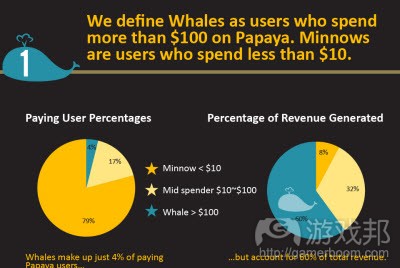
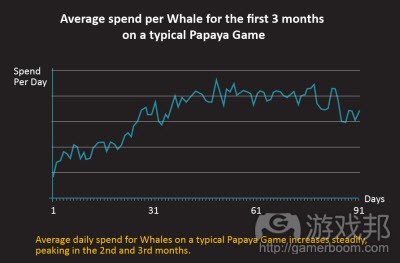
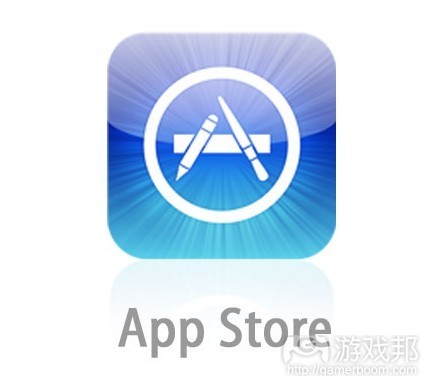
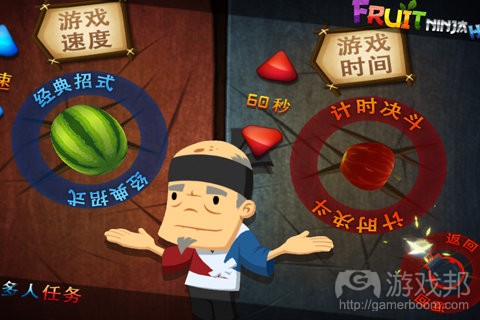
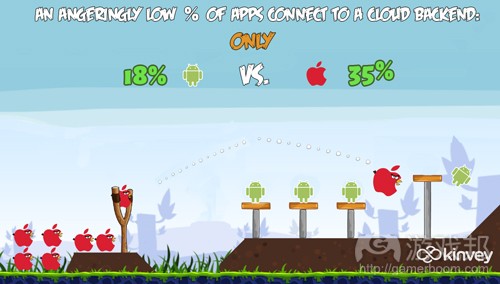
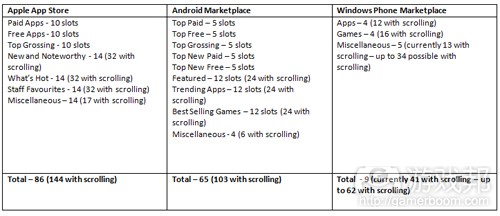














 闽公网安备35020302001549号
闽公网安备35020302001549号